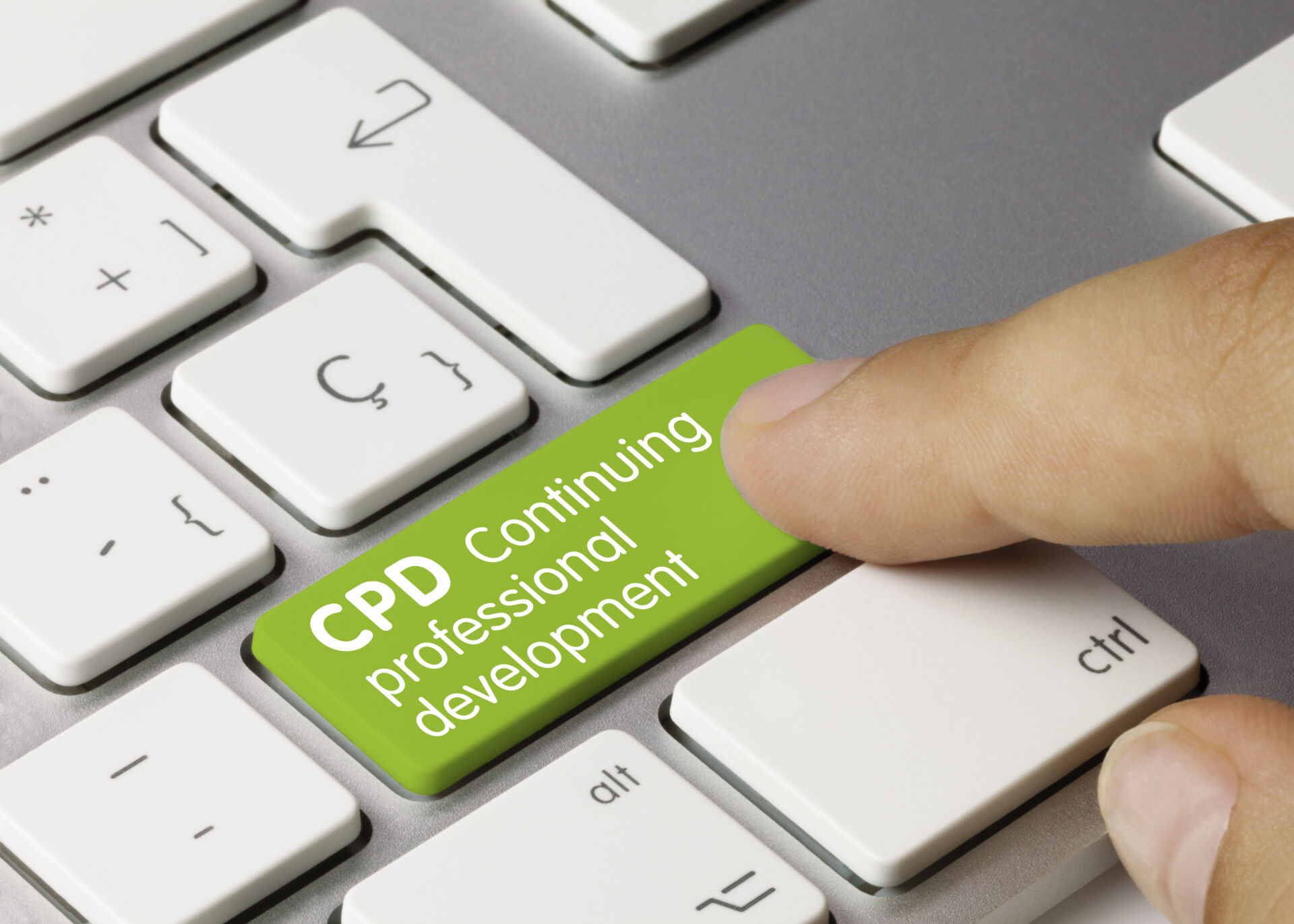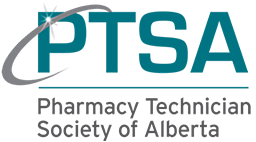What’s in Your Portfolio? Different CEU Sources

It’s almost the end of September, which means Alberta pharmacy technicians have only two months to ensure our continuing education and implementation records are completed (and documented) to renew our practice permits.
There are some of us that already have more than the required 15 continuing education units (CEU) completed and some of us that are still looking for options. Many pharmacy technicians are familiar with only one type of CE format – formal learning activities which are often presented as live events or in a self-study format. If this is your sole source of CE, you may be finding limited options geared toward pharmacy technician practice. These types of CE may be accredited or non-accredited.
I am a proponent of accredited CEU. If you’re wondering why accredited CEU is valuable, check out the Canadian Council on Continuing Education in Pharmacy’s (CCCEP) blog series. I also see great value in non-accredited CE, especially those that are obtained more informally. This might be the only option for learning that is specific to certain pharmacy technician practice areas.
While some provincial regulatory bodies have requirements for the number of CEU that must be accredited, the Alberta College of Pharmacy (ACP) does not. This significantly increases the options pharmacy technicians have for meeting continuing competence program expectations.
ACP allows learning to be documented in 15-minute increments, which means that if it takes you 15 – 30 minutes to read articles or other published documents that’s equivalent to 0.25 – 0.5 CEU. That can easily add up!
This year, my documented continuing education will easily exceed 50 CEU and that’s only a portion of the learning I’ve completed. While not an extensive list, here are some of the different sources that I use for my learning portfolio.
Organizations that Publish Standards and Guidelines
Reading new standards and guidelines is a great, informal way to learn and is important for staying up to date on best practices. The organizations that publish these types of grey literature usually have lists of documents available through their websites. Some even offer email subscription services that allow you to be notified of new content. If you’re not familiar with the term grey literature, and you’re a PTSA member, check out the Using Knowledge and Research Application in Practice education course.
The Institute of Safe Medication Practices Canada (as well as the US based ISMP) and National Association of Pharmacy Regulatory Authorities (NAPRA) are two that I feel all pharmacy technicians should be aware of. You can sign up to receive ISMP Safety Bulletins and Newsletters directly to your inbox here: Safety Bulletins – ISMP Canada. Some of the topics that appeared in recent issues include acetaminophen-related harm, confusion between vaccine expiry and beyond-use dates, long-term care home safety improvements, newer classes of medications for diabetes treatment, and penicillin formulation mix-ups. If you still want to attend live CE events, ISMP Canada offers both free and paid options: Education – ISMP Canada that may be relevant to your practice.
NAPRA also offers a news subscription service; you can subscribe to updates here: News – NAPRA. Did you know that in the last year NAPRA has released Principles of Professionalism for the Pharmacy Profession, Model Compounding Competencies for Pharmacists and Pharmacy Technicians in Canada, and updated Model Standards of Practice for Pharmacists and Pharmacy Technicians in Canada? These, along with other publications, are essential reads for pharmacy technicians, so why not get some CE credit for it?
There is also a wealth of information available through the Health Canada website on varyious topics. Interested in learning about new health products approved, veterinary drugs , healthy travel guidelines, or policies on manufacturing and compounding drugs? I’m sure there is something available for every pharmacy technician regardless of practice setting.
Published Literature
Scholarly and scientific journals are compilations of peer-reviewed articles published commercially. While most scholarly journals are published in print form, many offer open electronic access, so are available for free. I can easily spend 15 to 30 minutes reading an article from journals such as the Canadian Journal of Hospital Pharmacy, American Journal of Health System Pharmacy, Canadian Pharmacists Journal, and Journal of Pharmacy Technology, to name a few. Just the other day, I spent 2 hours and 20 minutes reading journal articles on a particular topic. That’s 2.25 CEU of practice relevant learning I can document in my learning portfolio.
This approach usually works best when there is a particular practice question or you want to answer or topic you’re researching. Try searching for articles through a database such as Google Scholar or PubMed Central®. Need somewhere to start? Try typing the term “pharmacy technician” into the search bar in PubMed. You’ll find articles about pharmacy technicians providing clinical care, refill authorization and informatics services as well as new and potential practice areas such as administering vaccines. Searching the published literature for relevant articles is a skill that can be honed so don’t get discouraged if you’re not finding what you need at first.
Industry Blogs and Newsletters
Blogs and electronic newsletters are one of the easiest ways to share information broadly. You may already be familiar with the Canadian Healthcare Network but there are a vast number of different blogs and newsletters that you can use for informal learning. I often target my subscriptions to the topics I’m most interested in, or are most relevant to my practice, at a given time. Currently, some of my favorites are Pharmacy Purchasing & Products, a US-based electronic magazine, and Critical Compounding Resources (CCR). Some of these resources have both free and paid content.
Many pharmaceutical and device companies provide education resources, informational blogs and even webinars. You can find a lot of content by browsing different websites or following certain organizations and companies on social media platforms like LinkedIn. Don’t forget to be diligent evaluating whether there is bias when articles are company-sponsored.
Become a CCCEP Reviewer
Reviewing continuing education as part of CCCEP’s accreditation process is another CEU source. CCCEP is always looking for new pharmacy technicians to review learning activities. Each time a learning activity is submitted for accreditation, CCCEP gathers several individuals to review the learning content and provide feedback on its relevance and compliance with accreditation standards. Once the CE activity is accredited, reviewers receive a letter of accreditation which is comparable to a statement of completion that you would receive if you completed the learning activity after it’s been accredited. You can document the same number of non-accredited CEU that the learning activity was accredited for. This type of learning is not for everyone, but another different CE source that might be worth pursuing. Contact CCCEP for more information.
These are only some examples of different CEU sources. How do you get your 15 CEU each year? Do you have any favorite sources? Share your thoughts in the comments below.
About the author: Since receiving her pharmacy technician diploma in 1998, Teresa Hennessey has practiced in front-line and leadership roles in both community and hospital pharmacies. Teresa is dedicated to helping pharmacy technician practice evolve through knowledge sharing and enabling opportunities for professional growth.
